2024年对HR专业人士来说是充满挑战和机遇的一年。经济不确定性、地缘政治紧张和技术进步是主要的挑战。文章强调了生产力的重要性,以及来自PwC、麦肯锡和埃森哲的洞察。利物浦经理朱尔根·克洛普的离职案例展示了领导力和文化的重要性。文章还强调了人力资源分析的重要性,提供了来自领先公司的见解。
2024年的HR趋势和预测涵盖了人工智能的影响和向基于技能的组织的转变。工作场所的心理安全、多样性、平等、包容和归属感仍然是重要议题。这篇文章为HR专业人士提供了全面的指导,帮助他们在未来一年中导航复杂性。
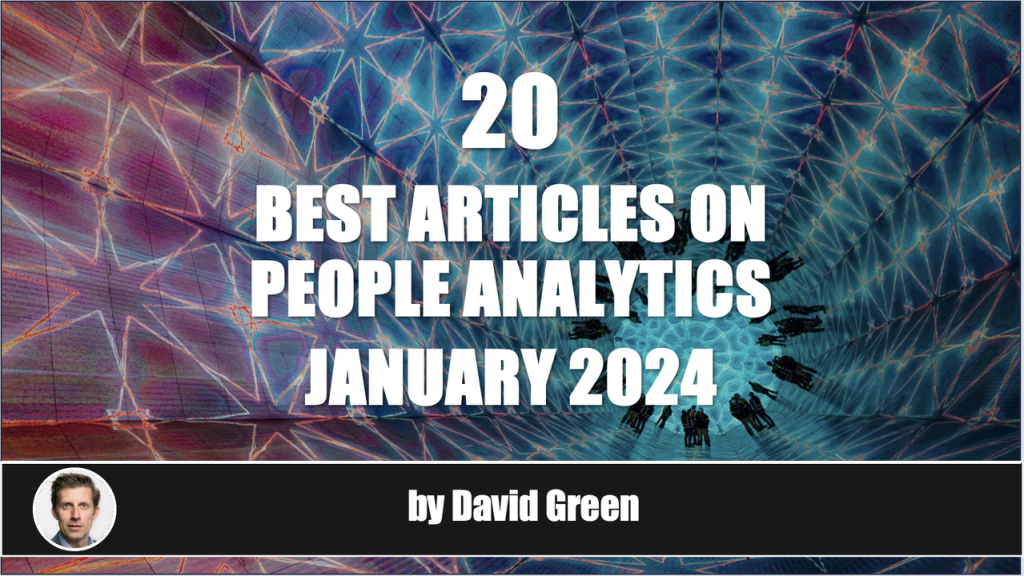
2024 is set to be a momentous year. With economic uncertainty, rising geopolitical conflict, and rapid advances in technology, it is also set to be a stormy 12 months for the world, for organisations, and for HR professionals too.
Perhaps this explains the slew of insightful resources in January, which has made compiling this month’s collection as challenging as it has been enjoyable. One of the key focuses has been on ‘productivity’, and I’ve brought together a number of resources on this topic. There are also new studies from the likes of PwC, McKinsey, Glassdoor, Accenture, and Deloitte as well as articles featuring practitioners from companies including Spotify, Microsoft, Ericsson, Lloyds Banking Group, and Standard Chartered. There’s lots to enjoy and learn from.
Are you an HR or People Analytics Leader seeking to transform your organisation’s People Analytics from mere insights to impactful business outcomes? If so, I invite you to join me for a webinar that Insight222 is hosting on February 21. Naomi Verghese and I will walk through the findings from the Insight222 People Analytics Trends research, unveiling the distinctive characteristics of ABCD Teams that propel organisations to new heights. Naomi and I will be joined by Alan Susi, VP and Global Head of Organisational Analytics and People Insights at S&P Global. Alan will share insights into how S&P Global successfully elevated their approach to people analytics, turning data into tangible business outcomes. You can register for the webinar here – or by clicking the image below.

As a fervent supporter, I’m still processing the totally unexpected news that Jürgen Klopp will be leaving his post as the manager of Liverpool at the end of the current football season. In his press conference on taking the reins at Anfield in October 2015, Klopp stated his goal was to turn Liverpool from “doubters to believers.” He has done this with some aplomb amassing a haul of seven trophies (to date) including the Champions League in 2019 and then, the following year, the Holy Grail of Liverpool’s first league title in 30 years.
But Klopp is more than a brilliant football manager. He is the epitome of an empathetic leader. His emotional intelligence and natural humility not only endears Klopp to his players, but to supporters too for whom he is adored. The reaction to the news reduced many Liverpool supporters to tears. I’m still hoping – probably forlornly - that like Alex Ferguson in 2002, Klopp will change his mind and stay.
In the likely event that he does depart, I’m sure that multiple studies will be made on Klopp’s time at Anfield, and that his leadership skills, use of data and analytics, and ability to build an inclusive winning culture will be deservedly celebrated. YNWA.
Before we get to this month’s collection of resources, I’d like to highlight once again the wonderful resource created by Richard Rosenow and the One Model team of open roles in people analytics and HR technology, which now numbers over 500 roles.
Richard Rosenow has also been busy compiling a study of People Analytics Conferences to attend in 2024 with the data collected from practitioners themselves. Society for Industrial and Organizational Psychology (SIOP), People Analytics World and the Wharton People Analytics Conference all come out well as does the Insight222 Global Executive Retreat. Thanks to Richard for putting this together.
Enjoy reading the collection of resources for January and, if you do, please share some data driven HR love with your colleagues and networks. Thanks to the many of you who liked, shared and/or commented on December’s compendium (including those in the Comments below).
If you enjoy a weekly dose of curated learning (and the Digital HR Leaders podcast), the Insight222 newsletter: Digital HR Leaders newsletter is published every Tuesday – subscribe here.
MCKINSEY - 2024 and beyond: Will it be economic stagnation or the advent of productivity-driven abundance? | PwC - 27th Annual Global CEO Survey: Thriving in an age of continuous reinvention | JOSH BERSIN - HR Predictions for 2024: The Global Search For Productivity | ERIK BRYNJOLFSSON - How AI Will Transform Productivity | BEN WABER AND NATHANAEL J. FAST - Is GenAI’s Impact on Productivity Overblown?
When I talk with CHROs and People Analytics Leaders at the companies we work with at Insight222, one of the words I’m hearing most at the moment is ‘productivity’. Continuing economic and geopolitical uncertainty, the promise of AI, and challenging talent demographics are all fuelling the demand for productivity from CEOs. Here are five resources that can be filed under the ‘productivity’ umbrella: (1) McKinsey’s Ezra Greenberg, Asutosh Padhi, and Sven Smit present a model for businesses to capture the three-sided productivity opportunity (see FIG 1). (2) Amongst a ton of takeaways, the standout theme from the annual PwC CEO survey is that the vast majority of participating companies are already taking some steps towards reinvention, while CEOs believe that 40% of their work is wasted productivity (see FIG 2). (3) Josh Bersin draws from the PwC survey in his 2024 predictions, where he outlines The Productivity Advantage where “If you can help your company move faster (productivity implies speed, not only profit), you can reinvent faster than your competition.” (4) Stanford professor Erik Brynjolfsson offers leaders an overview of how AI will transform productivity. (5) Finally, Ben Waber and Nathanael Fast’s absorbing essay in Harvard Business Review cautions leaders on leaning into the hype on GAI’s supposed positive impact on productivity too heavily. The authors break down two of the key challenges with LLMs: a) their persistent ability to produce convincing falsities and b) the likely long-term negative effects of using LLMs on employees and internal processes.

FIG 1: The three-side productivity opportunity (Source: McKinsey)

FIG 2: CEOs estimate administrative inefficiency at 40% (Source: PwC)
GERGELY OROSZ AND ABI NODA - Measuring Developer Productivity: Real-World Examples
Continuing the productivity theme, this is an invaluable resource by Gergely Orosz and Abi Noda in The Pragmatic Engineer newsletter. It provides detail on developer productivity metrics at 17 tech companies including Google, Microsoft, Spotify, and Uber (see summary in FIG 3).

FIG 3: Developer productivity metrics at 17 tech companies (Source: Pragmatic Engineer)
JASMINE PANAYIDES - Nine Ways to Put HR Trends and Predictions into Practice in 2024
There has been a flood of articles advising what the key HR trends, predictions, and opportunities for 2024 are, but how are HR professionals supposed to make sense of these? In her article for the myHRfuture blog, Jasmine Panayides provides actionable tips on how HR professionals can apply the trends, predictions and opportunities to their work, and their organisations so they can deliver value to the company and the workforce. Jasmine also helpfully summarises the trends/predictions from a variety of sources into one table (see FIG 4), including from: Visier Inc., Gartner, Bernard Marr, UNLEASH, Mercer, and Culture Amp as well as my own 12 Opportunities for HR in 2024 article.

FIG 4: Analysis of HR Trends and Predictions for 2024 (Source: myHRfuture)
KATARINA BERG - HR Trends for 2024 | GARTNER - 9 Future of Work Trends for 2024 | GLASSDOOR – 2024 Workforce Trends | HUNG LEE - Forecasting 2024 in Recruitment Part 1, Part 2, Part 3, and Part 4 | KEVIN WHEELER - What Does 2024 Hold in Store for Us? | STACIA GARR AND DANI JOHNSON – 2024 Mega Trends and how people leaders should respond (Webinar)
The deluge of commentators offering their HR trends and opportunities continued in January. As such, it is a challenge to sort the wheat from the chaff but in addition to those I highlighted in this compendium in December, and in Jasmine’s article above, I recommend diving into the following: (1) Spotify’s chief people officer, Katarina Berg, highlights ten trends with the common theme being each trend is a bridge, connecting the past with the future, and HR professionals are the architects crafting these vital links – including “Staying Human in the Age of AI – The Humanity Bridge”. (2) Gartner’s Jordan Turner and Emily Rose McRae highlight nine future of work trends for the year ahead (see FIG 5). (3) Aaron Terrazas and Daniel Zhao identify eight workforce trends based on Glassdoor’s data on workplace satisfaction, culture, and conversations. (4) Hung Lee is at the cutting edge of recruiting and HR tech, so his four-part series on recruiting in 2024 is definitely worth checking out – two examples include: “Multi-generational replaces neurodiversity as DEIB hot topic” and “Capital Allocation Shifts from Sourcing & Engagement to Assessment & Verification Tech”. (5) Futurist Kevin Wheeler offers seven insights and predictions together with his self-assessed certainty rating including “Generative AI will dominate, and every product will attempt to incorporate AI. 90% certainty” and “More firms will embrace a four-day workweek 50% certainty”. (6) Finally, I strongly recommend viewing the 2024 Mega Trends webinar hosted by Stacia Sherman Garr and Dani Johnson for RedThread Research, which breaks down the key macro factors impacting the world of work and how HR can respond.

FIG 5: 9 Future of Work Trends for 2024 (Source: Gartner)
GREG NEWMAN - 10 important topics that HR will likely ignore in 2024
Greg Newman takes an alternative, wry and contrarian approach by focusing his list of “predictions” on ten things most HR teams will continue to ignore in 2024. My favourite three are: (1) speaking the language of the business, (2) focusing AI conversations on ethics before technology, and (3) learning that good data is required to realise the dreams of AI and analytics.
By aligning HR language with business terminology, we can more effectively demonstrate the value of our initiatives in a way that resonates with business stakeholders.
ELLYN SHOOK AND PAUL DAUGHERTY - Work, workforce, workers: Reinvented in the age of generative AI
A new study from Accenture, co-authored by Ellyn Shook and Paul Daugherty, on how generative AI is impacting work, provides guidance on how leaders can: “Set and guide a vision to reinvent work, reshape the workforce and prepare workers for a generative AI world, while building a resilient culture to navigate continuous waves of change.” The report reveals a trust gap between workers and leaders on key elements related to GAI’s impact on work, the workforce, and workers. The authors also highlight four accelerators for leaders to navigate the journey ahead: (1) Lead and learn in new ways, (2) Reinvent work, (3) Reshape the workforce (see example in FIG 6), and (4) Prepare workers.

FIG 6: Illustrative example of how work and roles can be reallocated in a GAI future (Source: Accenture)
ROGER W. HOERL AND THOMAS C. REDMAN - What Managers Should Ask About AI Models and Data Sets
The decision on whether to deploy AI models within an organisation ultimately lies with business leaders who may not be qualified to identify risks and weaknesses related to AI models and data sets. In their article, Roger Hoerl and Tom Redman provide (1) A framework (see FIG 7) designed to equip leaders with context and based on their concept of the right data. (2) A set of six questions for leaders to ask their AI model developers before and during modelling work and deployment. (3) Guidance for leaders on how to assess AI model developers’ answers to those six questions.

FIG 7: The Right Data Framework (Source: Roger W. Hoerl and Thomas C. Redman)
STEVE HATFIELD, SUE CANTRELL, AND BRAD KREIT - Beyond the quick fix: How workforce data can drive deeper organizational problem-solving
The premise of this thoughtful article by Steve Hatfield, Susan Cantrell, and Brad Kreit is that without the right context, even simple measurements can undermine efforts to convert people data into value. They then explore several examples – in the workforce, in the workplace, and in the work – where organisations might be limiting their analysis to the surface level and how deeper analysis can reveal systemic issues that lead to opportunities for transformation. Guidance on three actions leaders can take to help ensure they are not missing important context in their data analysis are provided: (1) Bring data from different domains and sources together for analysis. (2) Make sure you’re measuring what you should—not just what you can. (3) Identify potential biases in data collection algorithms.
If organizations want to move beyond quick fixes and use work and workforce data to drive deeper—and often more challenging—problem-solving, it is important that they look at the data in context.
NAOMI VERGHESE - How to Measure the Value of People Analytics
My Insight222 colleague Naomi Verghese digs how to measure the commercial value of people analytics, highlighting a powerful case study from Jaesun HA and LG Electronics. Naomi provides detail on four key areas where people analytics adds value (business performance, workforce experiences, driving an analytics culture and societal benefit) as well as providing data on the characteristics of companies that ARE creating commercial value from people analytics (see FIG 8).

FIG 8: Characteristics of people analytics that disclosed and measured commercial value of people analytics solutions (Source: Insight222 People Analytics Trends, 2023)

ANDRÉS GARCIA AYALA - 5 Change Drivers Impacting People Analytics & How To Thrive In Them | WILLIS JENSEN - Attrition versus Retention: Which Should I Use? | KEITH McNULTY – Regression Modeling in People Analytics: Survival Analysis | LYDIA WU - The Market Sucks and You are Looking for a Job, Now What? | SEBASTIAN SZACHNOWSKI - 16 HR Metrics for IT | ERIN FLEMING AND NICK JESTEADT - People Analytics Perspectives from the Fringe: Current Priorities and a View on Optimized Teams in 2024
January saw a slew of articles from current and recent people analytics leaders, which typically act as a spur and inspiration for the field. Six are highlighted here: (1) Andrés García Ayala highlights some of the key change drivers impacting people analytics and ways to incorporate them into our work. (2) Willis Jensen builds on the recent primer on attrition metrics by Ben Teusch that I highlighted in December’s edition. He explains why we should be using attrition and retention as separate terms that lead to distinct metrics with different objectives (see also FIG 9). (3) Keith McNulty provides another indispensable practical guide for people analysts with a step-by-step tutorial to conducting survival analysis in R. (4) The prolific Lydia Wu turns her attention to providing some handy guidance for those looking for their next people analytics / HR tech role. (5) Sebastian Szachnowski provides a useful breakdown of 16 HR metrics for technology companies. (6) Last but definitely not least, Erin Fleming and Nick Jesteadt provide insights from their survey of fellow people analytics practitioners. Insights include a) 41% of respondents (n=49) operate as a one-person people analytics team, and ii) the main current focus areas of work include employee turnover, cultural engagement, return to office, and restructuring.

FIG 9: When to use Attrition and Retention (Source: Willis Jensen)
MAX BLUMBERG - The Big List of GPTs to Revolutionize Your People Processes | JOHANNES SUNDLO - GenAI for People Analytics
Two articles addressing the opportunity for generative AI in the people space. (1) Max Blumberg (JA) ?? sets out 93 potential ways to upgrade your People Processes with AI and GPTs across four categories – workforce planning and strategy, recruitment, learning and development, and employee wellbeing. (2) Johannes Sundlo provides examples of companies using GAI in their people analytics work to support analyses on engagement data, skills, and tailoring training recommendations.
GPTs are an amazing tool for scenario planning, forecasting future workforce needs, identifying talent gaps, and developing integrated talent strategies.
DAVE ULRICH, NORM SMALLWOOD, AND JOE GROCHOWSKI - Why and How to Move HR to an Outside-In Approach
When asked the question, “What is the biggest challenge in your job today?” HR professionals will typically provide answers such as: “Build a skills-based organisation” or “Help our employees have a better experience”. As Dave Ulrich, Norm Smallwood, and Joe Grochowski write, these answers would be far more powerful when a “so that” is applied e.g. “Help employees have a better experience so that customer experience improves.” The article demonstrates that greater value is created with an outside-in approach that starts with the needs of external stakeholders (customers, investors, community) and then figuring out the implications inside the company for meeting those needs. Dave, Norm, and Joe also present their Human Capability Framework and a tool that provides an assessment of an organisation’s outside-in performance (see FIG 10).

FIG 10: Human capability from the outside-in - diagnostic questions (Source: Dave Ulrich et al)
AMY WEBB - Bringing True Strategic Foresight Back to Business
In her article for Harvard Business Review, Amy Webb defines strategic foresight as “a disciplined and systematic approach to identify where to play, how to win in the future, and how to ensure organizational resiliency in the face of unforeseen disruption.” Her article also advocates for the integration of strategic foresight as a core competency in every organisation, regardless of size. Moreover, Amy provides guidance on how to operationalise strategic foresight by unveiling a ten-step process. Read alongside another article authored by Amy for HBR: How to Do Strategic Planning Like a Futurist, which includes Amy’s Futurist’s Framework for Strategic Planning (see FIG 11).

FIG 11: A Futurist’s Framework for Strategic Planning (Source: Amy Webb)
WORLD ECONOMIC FORUM AND PwC - Putting Skills First: Opportunities for Building Efficient and Equitable Labour Markets
As the introduction to this compelling collaboration between the World Economic Forum and PwC begins: “Skills and talent shortages are critical challenges facing societies and economies today. The absence of relevant skills impedes business growth, hinders economic prosperity, and inhibits individuals from realizing their full potential.” The report identifies five specific opportunities for intervention where the gains from skills-first solutions are most likely for employers and workers alike (see ‘Skills-first Framework’ in FIG 12). Additionally, the report also showcases 13 Skills First “Lighthouses”, including IBM, Siemens, Standard Chartered and Sanofi. It concludes by offering key takeaways regarding six success factors in implementing skills-first approaches including (1) Sponsorship from leadership, (2) Alignment with business needs, and (3) Data and evaluation for iteration. (Authors: Genesis Elhussein, Mark Rayner, Aarushi Singhania, Saadia Zahidi, Peter Brown MBE, Miral Mir, and Bhushan Sethi).
A cultural shift to skills-first approaches needs both sponsorship from executives and governance from human-resources professionals

FIG 12: Skills-first Framework (Source: World Economic Forum
PETER SHEPPARD - Learning from our Skills Journey | BEN AUTY - What are the new skills people will need for the future of work? | TANUJ KAPILASHRAMI - How Standard Chartered is Unlocking the Power of Skills in the Workplace
Many of the organisations we work with at Insight222 have embarked on the road to becoming a skills-based organisation. It is not an easy journey, so it is helpful to learn from other companies who are treading this path. Three of these are Ericsson, Lloyds Banking Group, and Standard Chartered. (1) In his article, Peter Sheppard shares learnings from Ericsson’s skills journey including a) it’s not jobs or skills; it’s skills and jobs, b) it’s a whole organisation activity, c) Less is more with skills, and d) Data drives value. (2) Ben Auty shares insights as to why Lloyds Banking Group is developing a learning culture to build the workforce of the future at the bank, the main skills they are focusing on, and the central role the recently established Reskilling Team is playing. (3) Tanuj Kapilashrami shares how Standard Chartered catalysed their work on skills by identifying adjacencies between ‘sunset’ and ‘sunrise’ roles.
We looked at skills adjacencies between ‘sunset’ jobs and ‘sunrise’ jobs: so, what are the jobs that are going to go away? What are the skills that help employees get reskilled into some of these sunrise jobs? We ran five proofs of concept, we showed some real redeployment opportunities and started making the skills narrative real.

JENNIFER E. SIGLER WITH STEPHANIE DENINO - So Many Stakeholders, So Little Time: State of EX 2023-2024
The fifth annual State of EX study authored by Jennifer E. Sigler, PhD on behalf of The EXchange, Inc, TI PEOPLE and FOUNT Global, Inc. is a treasure chest of insights on the fast-evolving practice of employee experience. It highlights the top four priorities for EX as: (1) Redesigning experiences, (2) Getting broader buy-in for EX work across the organisation, (3) Building an EX roadmap for the organisation, and (4) Getting more / better data. One other standout finding from the study suggests that senior leaders are increasingly focused on EX with a majority of respondents (63%) saying their organisation’s senior leaders view EX as equal to or even more important than other corporate priorities. This bodes well for the future of EX. Thanks to Stephanie Denino and Volker Jacobs for highlighting the study.

FIG 13: EX Team Priorities YOY Change (Source: The EXchange, TI People and FOUNT Global, Inc)
NADJIA YOUSIF, ASHLEY DARTNELL, GRETCHEN MAY, AND ELIZABETH KNARR - Psychological Safety Levels the Playing Field for Employees | PETER CAPPELLI AND LIAT ELDOR - Can Workplaces Have Too Much Psychological Safety?
Two perspectives on psychological safety in the workplace. In the first article, Nadjia Yousif, Ashley Dartnell, Gretchen May, and Elizabeth Knarr present the findings of Boston Consulting Group (BCG) research, which finds how psychological safety benefits inclusion, reduces attrition in diverse groups and effectively acts as an equaliser - enabling diverse and disadvantaged employee groups to achieve the same levels of workplace satisfaction as their more advantaged colleagues. The study also highlights the direct relationship between empathetic leadership and feelings of psychological safety in the workforce, giving leaders a clear directive to be empathetic and thereby engender psychological safety. The second article by Peter Cappelli and Liat Eldor presents research that found that when you move from average to high levels of psychological safety, performance in routine jobs actually declined.

FIG 14: Psychological safety has an outsize impact on retention for diversity groups (Source: BCG)
RASMUS HOUGAARD, JACQUELINE CARTER, AND ROB STEMBRIDGE - The Best Leaders Can’t Be Replaced by AI
While there are some areas where AI is already surpassing or will surpass human capabilities, there are several it cannot replace. Based on their research into employees’ comfort with AI in management, as well as their decades of research on the qualities of effective leadership, Rasmus Hougaard, Jacqueline Carter, and Robert Stembridge identify the promise (and perils) of AI-enabled management (see FIG 15), as well as the three uniquely human capabilities leaders need to focus on honing, especially as AI begins to figure more in management: (1) awareness, (2) compassion, and (3) wisdom. For more from Rasmus, I recommend listening to his podcast discussion with me: How To Be a More Compassionate Leader.
Leaders who deepen their ability to lead with humanity will win at attracting, retaining, developing, and motivating top talent.

FIG 15: AI versus Human: A matric of leadership activities (Source: Potential Project)

DIVERSITY, EQUITY, INCLUSION, AND BELONGING
JULIE COFFMAN, ALEX NOETHER, BIANCA BAX, CASSY REICHERT, AND KRYSTLE JIANG - The Business of Belonging: Why making everyone feel included is smart strategy
Revealing data from a Bain survey of 6,000+ employees across four countries, which finds employees who have seen their companies intentionally invest in inclusion since 2020 are three times more likely to feel fully included than employees who have not seen such investment from their employers. Other findings include (1) Combining diversity and inclusion maximises a company’s capacity (by 4x) to innovate, and (2) Employees with inclusive leadership are 9x more likely to feel fully included at work (see FIG 16). (Authors: Julie Coffman, Alex Noether, Bianca Bax, Cassy Reichert, and Krystle Jiang).

FIG 16: Employees with inclusive leadership are 9x more likely to feel fully included at work (Source: Bain)
SHUJAAT AHMAD - DEIB Is At A Crossroads—It’s Time for Bold Action and Clear Metrics
Given recent developments it’s reasonable to say that Diversity, Equity, Inclusion, and Belonging (DEIB) is at an existential crossroads. As Shujaat Ahmad writes in his excellent article for Round: “Boards, leadership teams, and investors hold the power to set the tone, shape the policies, and allocate the resources to support DEIB initiatives: for DEIB to work effectively, they must shift from well-intentioned wordsmiths to committed drivers that hold the organization accountable for outcomes and positive change.” Shujaat then unveils his blueprint to help leaders assess progress and drive meaningful change, clarifying the ‘why’ before diving into the ‘how’ covering measuring what matters and interventions (see FIG 17). For more from Shujaat, I recommend visiting Belong and Lead.

FIG 17: Source – Shujaat Ahmad
Much of the innovation in the field continues to be driven by the vendor community, and I’ve picked out a few resources from January that I recommend readers delve into:

FIG 18: The growing disparity in sentiment between junior and senior employees (Source: Revelio Labs)

FIG 19: How employees and HR leaders differ on perceptions of DEIB progress (Source: Gallup)

FIG 20: Source – Slack
In another month of high-quality podcasts, I’ve selected five gems for your aural pleasure: (you can also check out the latest episodes of the Digital HR Leaders Podcast – see ‘From My Desk’ below):
CHRIS LOUIE, TOMAS CHAMORRO-PREMUZIC, TERRI HORTON, AND LINDSEY SHINTANI - Power a dynamic workforce by embracing AI
An enlightening panel discussion from the recent LinkedIn Talent Connect where Chris Louie, Dr Tomas Chamorro-Premuzic, Terri Horton, EdD, MBA, MA, SHRM-CP, PHR, and Lindsey Shintani discuss how AI is changing learning and career paths. They provide guidance on how to overcome AI anxiety and empower impactful futures.
KEVIN WHEELER AND BAS VAN DE HATERD – Talent Acquisition Excellence
An excellent new book published by Kogan Page and authored by Kevin Wheeler and Bas van de Haterd (He/His/Him). It provides an insightful and detailed analysis of how technologies such as artificial intelligence and machine learning in combination with analytics can improve talent acquisition and recruitment.
YUYE DING AND MARK (SHUAI) MA - Return-to-Office Mandates
A huge thank you to Nick Bloom for bringing my attention to this paper from Yuye Ding and Mark Ma, which studied the impact of 137 Return to Office mandates on the performance of S&P500 firms from 2020-2023. The key findings, as summarised by Nick, are illuminating: (1) RTO mandates are more likely in firms with poor recent stock performance, and in those with powerful male CEOs. (2) Glassdoor data finds RTO mandates significantly reduce employee ratings for job satisfaction, work-life balance, and senior management. (3) There is no significant impact of RTO mandates on either firm profitability or firm stock-returns.

FIG 21: Distribution of firms’ RTO mandates (Source: Yuye Ding and Mark Ma)
FROM MY DESK
January saw the first three episodes of Series 36 of the Digital HR Leaders podcast, sponsored by our friends at ScreenCloud. Thank you to Luke Farrugia.


KAZ HASSAN AND LUKE FARUGGIA - How to Bridge the Gap Between Customer and Employee Experience - What can HR learn from marketing's journey in using data, analytics and technology to understand and personalise the customer experience? How can we leverage these insights in HR to boost our employee experience initiatives? Kaz Hassan and Luke Faruggia join me to discuss these topics and more.

Finally, this month I’d like to thank:
David Green ?? is a globally respected author, speaker, conference chair, and executive consultant on people analytics, data-driven HR and the future of work. As Managing Partner and Executive Director at Insight222, he has overall responsibility for the delivery of the Insight222 People Analytics Program, which supports the advancement of people analytics in over 90 global organisations. Prior to co-founding Insight222, David accumulated over 20 years experience in the human resources and people analytics fields, including as Global Director of People Analytics Solutions at IBM. As such, David has extensive experience in helping organisations increase value, impact and focus from the wise and ethical use of people analytics. David also hosts the Digital HR Leaders Podcast and is an instructor for Insight222's myHRfuture Academy. His book, co-authored with Jonathan Ferrar, Excellence in People Analytics: How to use Workforce Data to Create Business Value was published in the summer of 2021.
I'll be speaking about people analytics, the future of work, and data driven HR at a number of upcoming events in 2024:
More events will be added as they are confirmed.
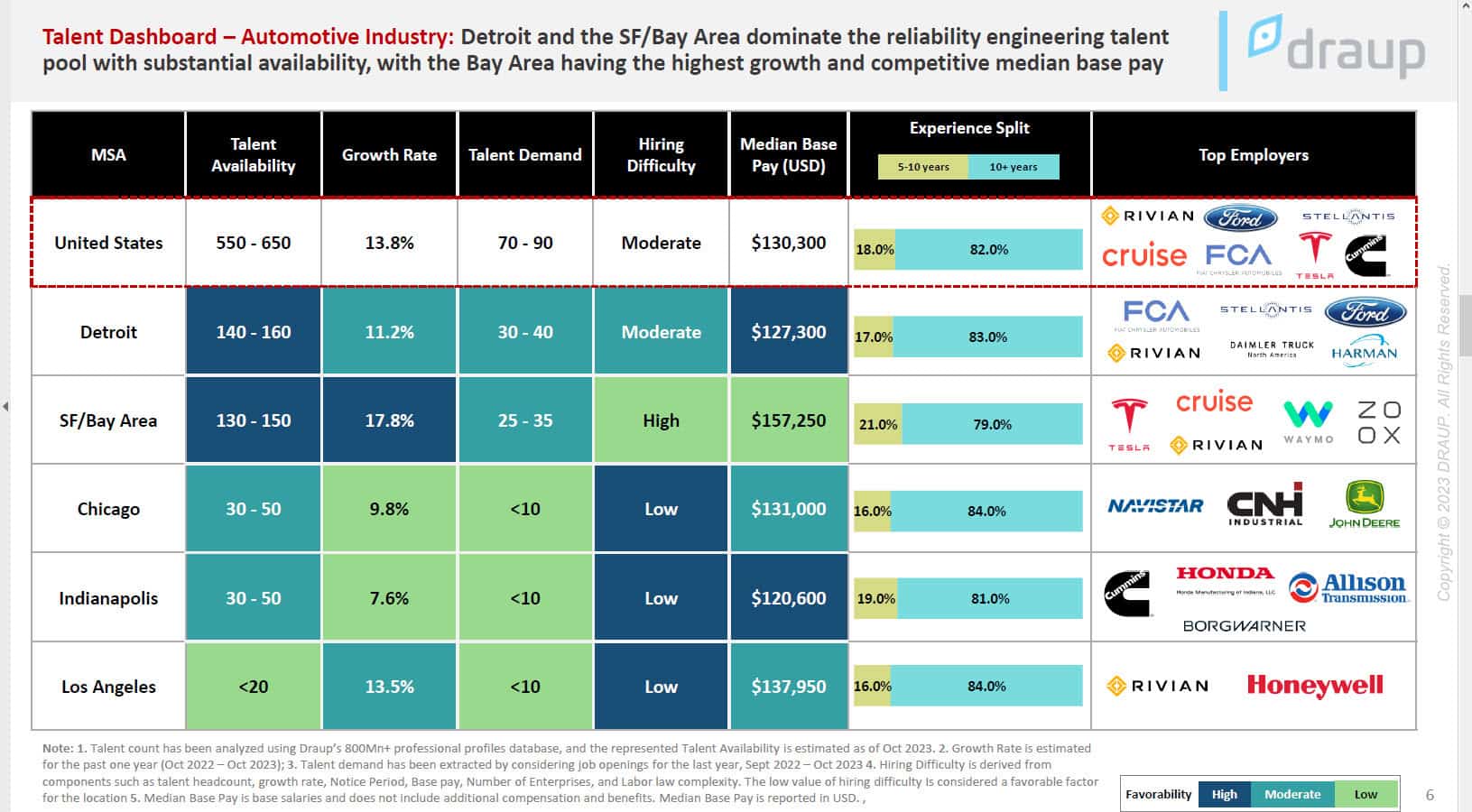
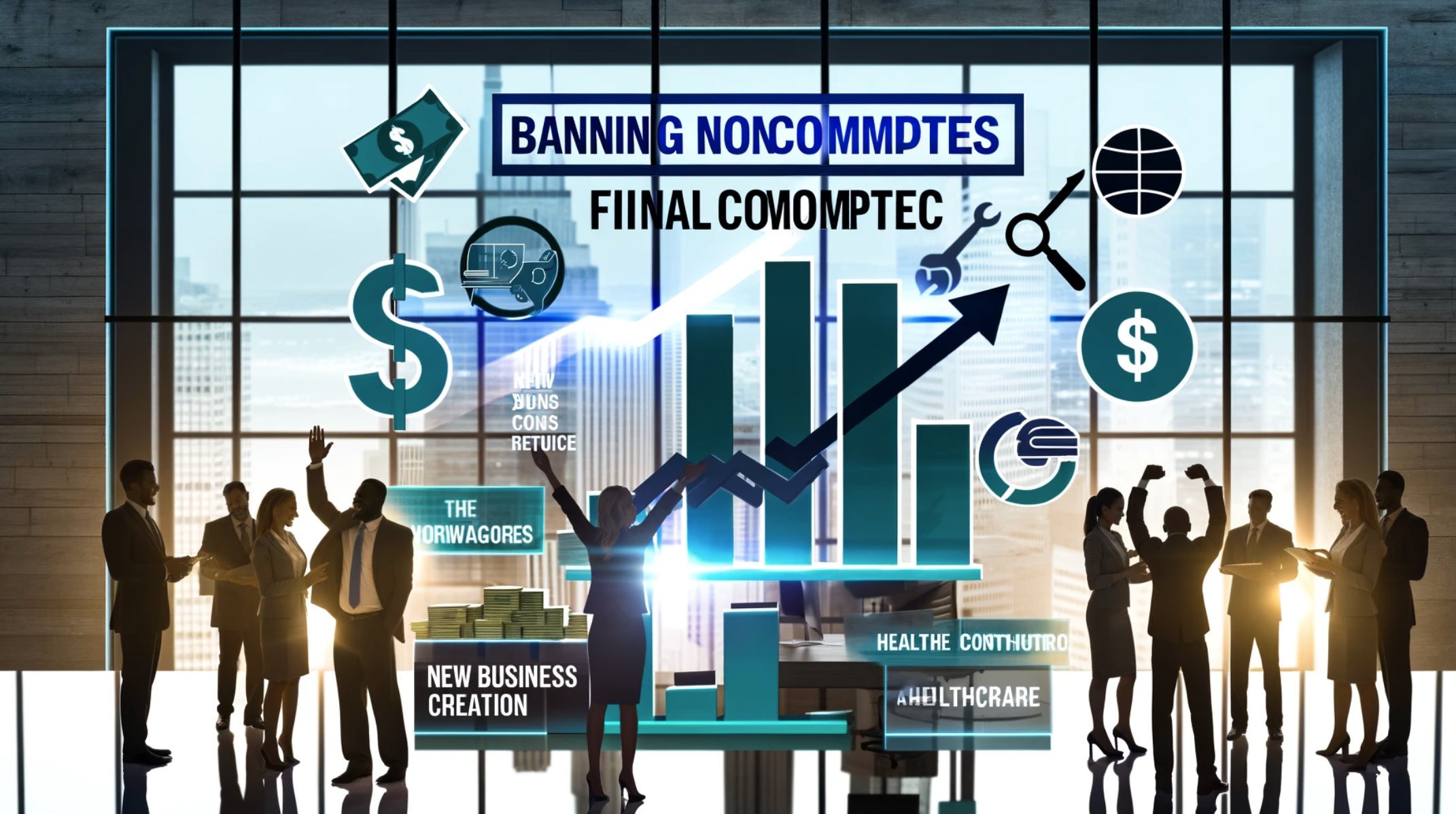
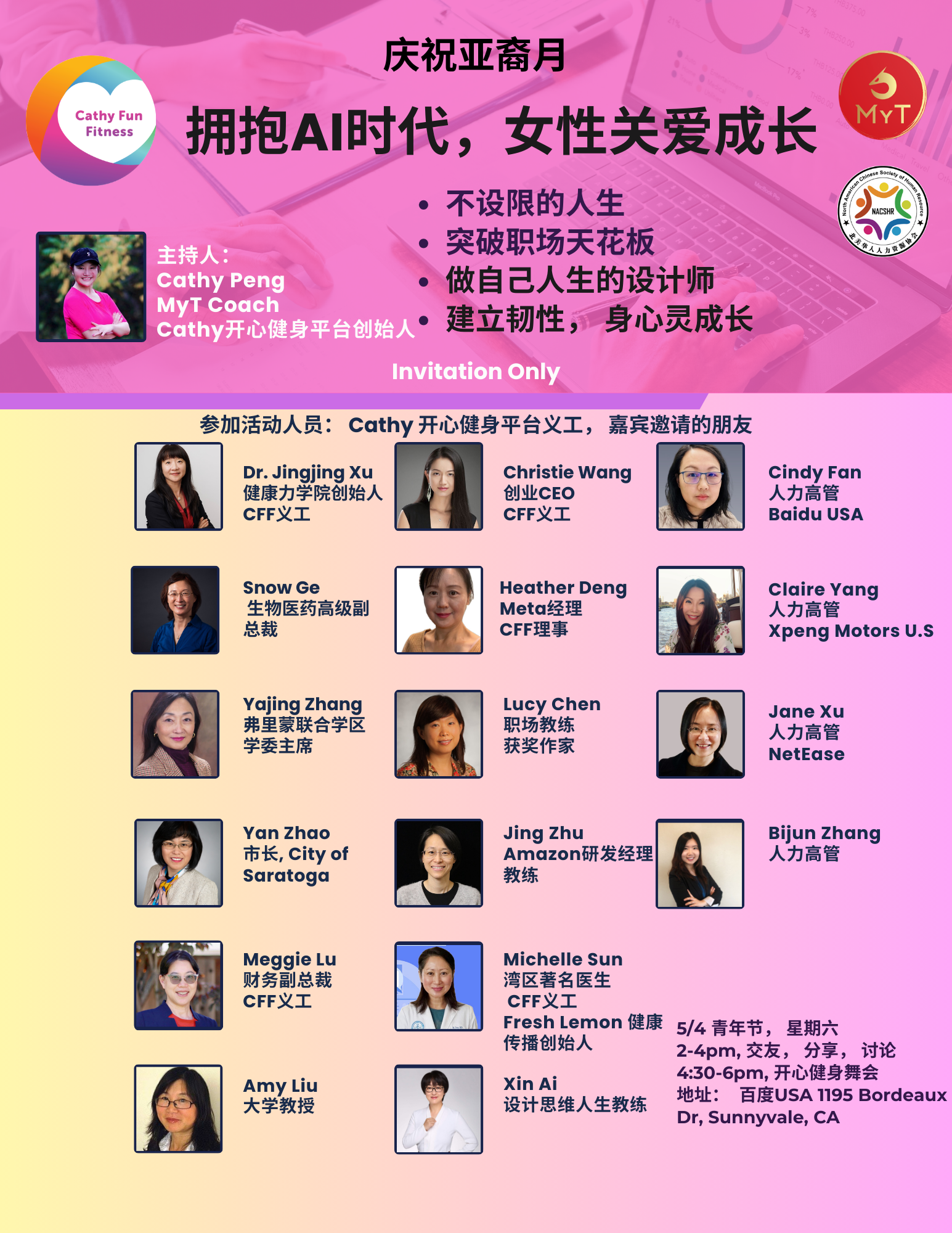
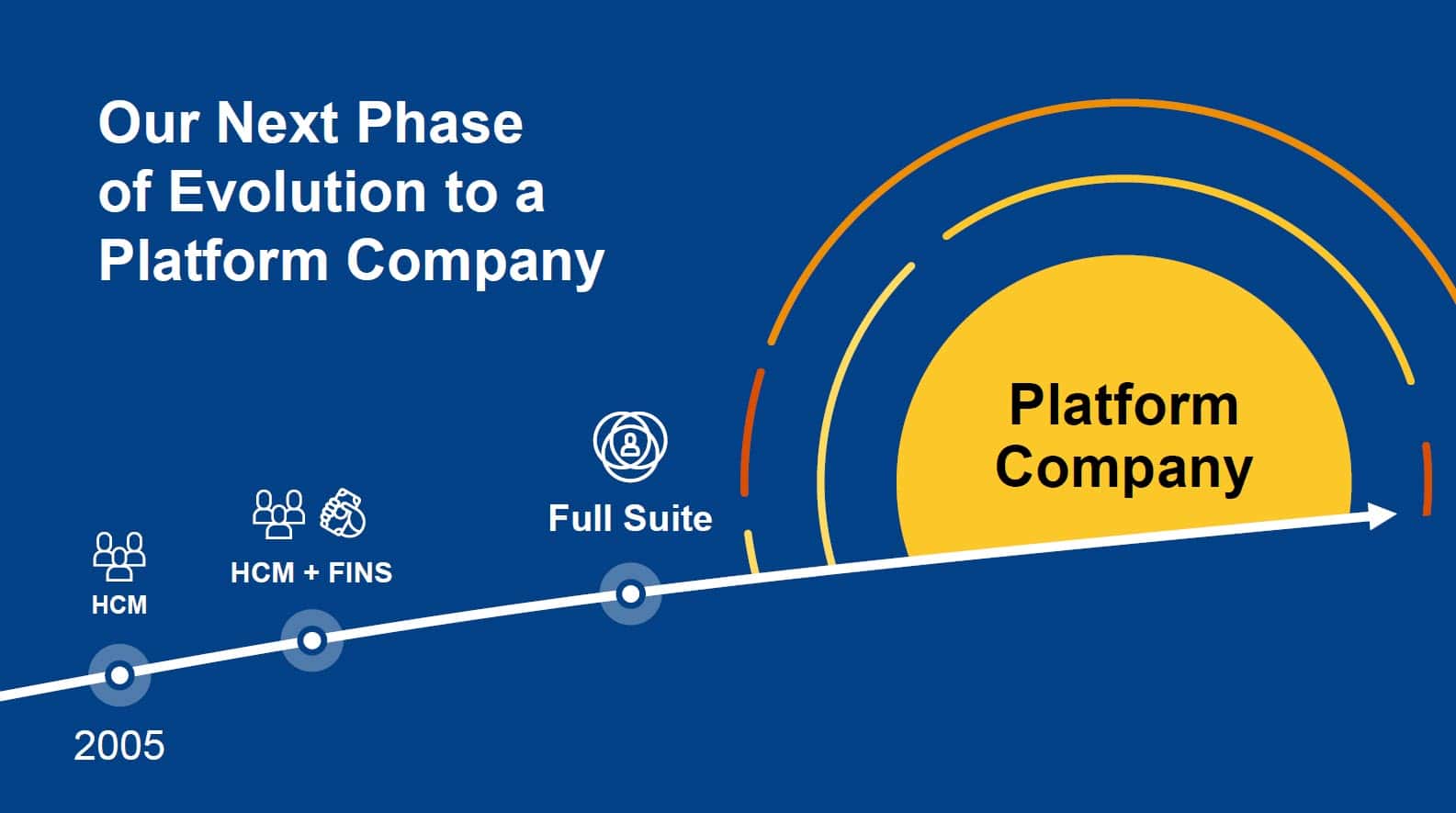

 扫一扫
添加客服
扫一扫
添加客服




